Emperor, merchants, clergy
This is a copy of a famous altarpiece by Albrecht Dürer. The original was unfortunately damaged. Commissioned by German merchants, Dürer painted it in 1506 for a church in Venice. He was already extremely well known in Germany, but with this painting Dürer became famous overnight in Italy too.
The artist has included himself in his painting. Leaning against a tree trunk in the right-hand middle ground, Dürer looks out of the picture with a self-assured air.
According to the legend, St Dominic, the founder of the Dominican order, received the Rosary in its present form from the Blessed Virgin when she appeared to him in 1208. Then he introduced it to his order.
This picture shows members of the nobility, the clergy, and wealthy burghers. Only the Emperor Maximilian I can be identified with complete certainty.

It seems very likely that Hans Burgkmair spent several weeks in Italy. His travels brought him to Venice. This city was a favourite destination for fifteenth- and sixteenth-century southern German painters. The imperial city Augsburg also had close ties to Venice through the Fugger family and the German trading office on the Rialto. At the time he accepted the commission for his Feast of the Rosary, Dürer was already in contact with the Fuggers.
In Venice the artistic tone of the day was set by the elderly Giovanni Bellini and his rising pupils Giorgione and Titian. Dürer admired Bellini and may have told Burgkmair about him. Whether this is true or not, there can be no doubt that the Augsburg master was deeply moved by the works of these three Venetian star artists.
In this altarpiece, on which both artists and merchants lavished praise, Dürer competed with the work of the leading Venetian painters of his time. He also shows his sensitivity to new kinds of motifs and demonstrates his ability to integrate Italian influences into his own artistic style.
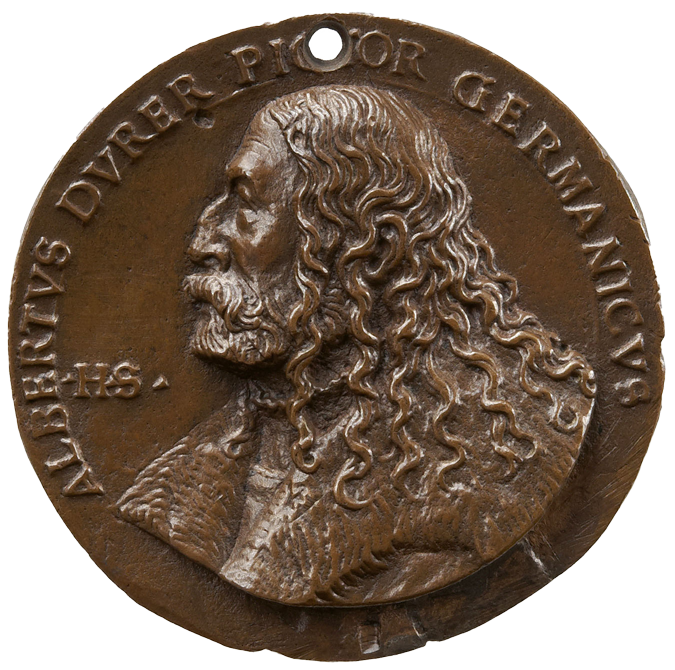
Hans Schwarz, Portrait medal of Albrecht Dürer, 1520
Albrecht Dürer
Albrecht Dürer remains one of the most famous German painters. His travels to Venice had a lasting impact on his art. He worked in almost all areas of the visual arts, including theory. Dürer set new standards in the field of printmaking print making in particular.
| Born | 1471, Nuremberg, Germany |
| Died | 1528, Nuremberg, Germany |
| Children | - |
| Partner | Agnes Frey (1475–1539) |
| Parents | Albrecht Dürer the Elder, Barbara Holper |
Oh, how I shall freeze after the sun; here [in Venice] I am a gentleman, at home I am a parasite.
From a letter sent by Albrecht Dürer from Venice to Willibald Pirckheimer, October 1506

At His Majesty’s service
Augsburger artists and Emperor Maximilian I.
Maximilian I was mockingly referred to as the ‘Mayor of Augsburg’, as there was no other city in the empire where the indefatigably itinerant ruler stayed so often and for such long periods.
This was a stroke of luck for Augsburg’s artists, as it led to their receiving numerous commissions, particularly Burgkmair, who enjoyed the special favour of the emperor and his adviser Peutinger. In the case of Maximilian´s ambitious book projects Peutinger was responsible for editing the texts, many of which originated with the emperor himself, and for commissioning the artists and coordinating their work, as in many cases several artists were involved in a single project.
Maximilian I had a fine understanding of how to best exploit the arts for the public representation of his person and family. He used various pictorial media to have himself and the house of Habsburg glorified as he saw fit, setting new standards as he did so, most notably in printmaking. However, most of these large-scale and richly illustrated memorial projects were still uncompleted at his death.
Maximilian I
Maximilian’s first marriage, to Mary of Burgundy, was the initial step in the Habsburgs’ rise to the status of a great European power. As well as dealing with the difficulties involved in controlling the newly acquired territories, Maximilian, who became emperor in 1508, devoted himself to promoting the sciences and the arts. He had a decisive influence on the works of art that he commissioned.
| Born | 1459, Wiener Neustadt, Austria |
| Died | 1519, Wels, Austria |
| Children | including Philipp I ‘the Fair’, King of Castile Margaret of Austria, Regent of the Habsburg Netherlands |
| Partner | 1. Mary of Burgundy 2. Bianca Maria Sforza |
| Parents | Emperor Frederick III, |
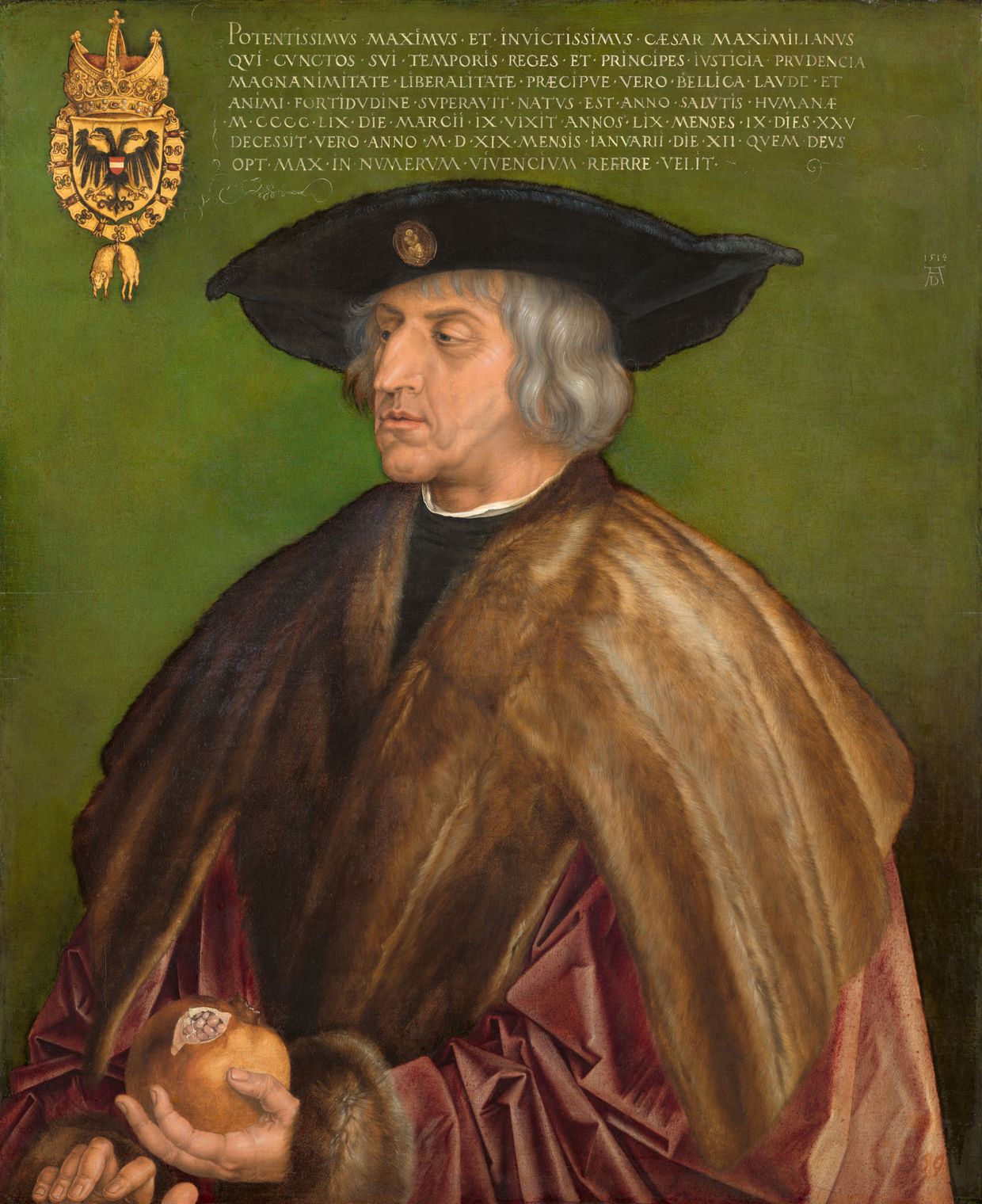
Albrecht Dürer, Portrait of Emperor Maximilian I, c.1519 or later

Hans Weiditz the Younger after Albrecht Dürer, Portrait of Emperor Maximilian I, c.1519 or later

Leonhard Beck, St George and the Dragon, Augsburg, c.1513/14

Hans Burgkmair the Elder, Design for an equestrian monument of Emperor Maximilian I, c.1508/09
Ruler and patron
Throughout his life Emperor Maximilian I exploited the power of images and had his person and his rule glorified in almost all the artistic media available.
Such propaganda was intended to remain effective even after his death. The use of prints to develop and propagate his image was a new phenomenon. As they could be easily reproduced, they were used to make the emperor known and famous throughout his empire. He was the highest-ranking art patron in Augsburg and stood out alone through the sheer number and range of his commissions, which extended from the areas of armour-making to textiles, panel paintings, stained glass, sculptures and works of graphic art.
The new rich
Urban elites
Whereas in earlier times it had been largely the Church, rulers, and members of the nobility who commissioned works of art, during this period the market began to change.
Artists’ ties to their traditional clients loosened and they started to work for a new clientele made up of patricians and members of merchant families, who had grown wealthy through the boom in trade and commissioned art as a means of self-representation. Other reasons for such commissions included the wish to build up a collection or to increase prestige, along with the hope of ensuring salvation by making donations to churches and monasteries. In these fields there was considerable rivalry amongst the new art patrons.
The importance of the altarpiece gradually declined with changes in taste and the influence of the Reformation. By contrast, the relatively young and more private genre of the portrait experienced a heyday. Events such as weddings, granting of privileges or raising in rank offered a reason for commissioning such portraits in which the clothing or other visual elements could be used to suggest a higher social rank than that actually held by the sitter.
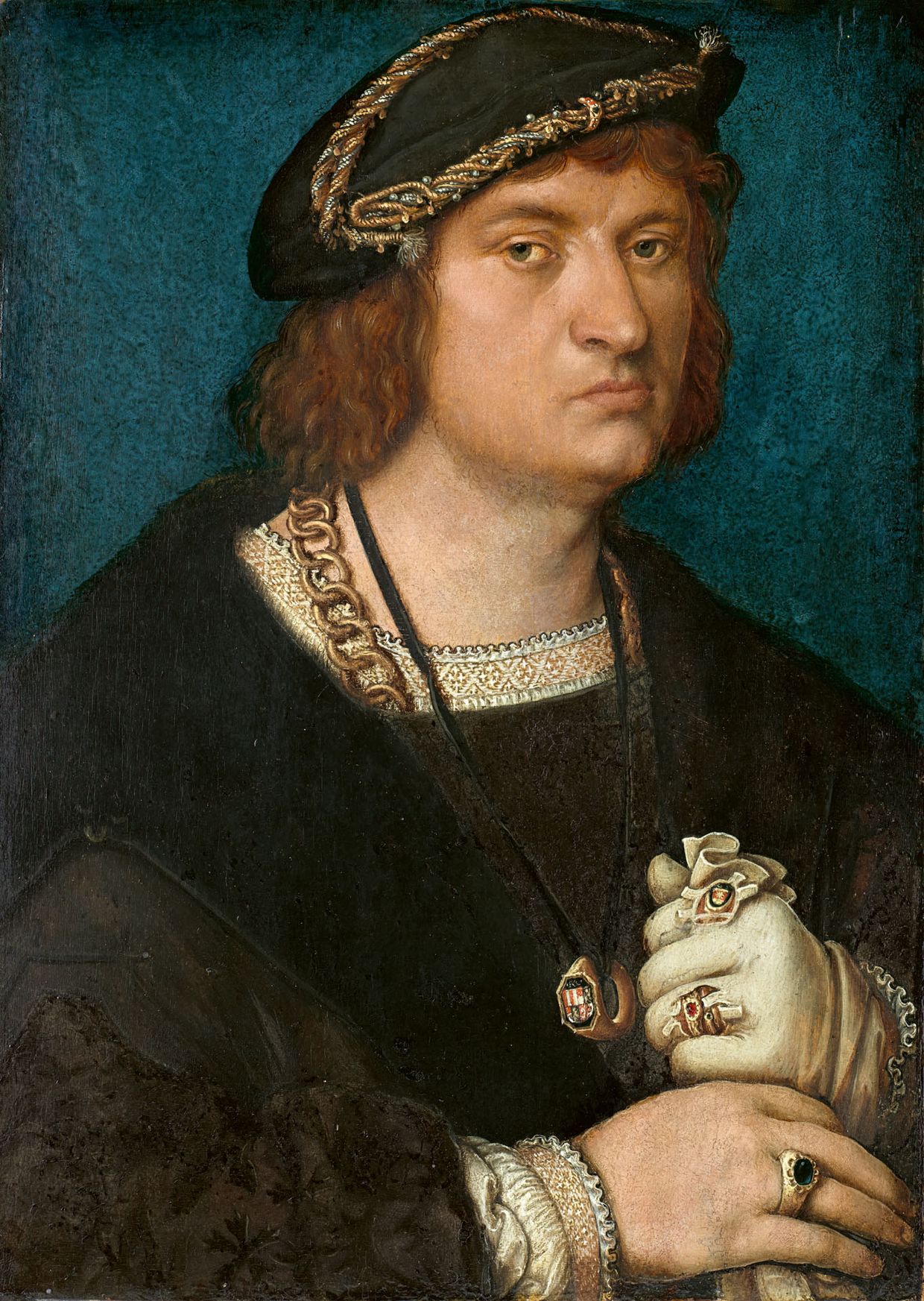
Hans Holbein d.Ä., Bildnis des Jörg Saur, 1512/15
Before painting a portrait, a preparatory drawing had to be made, which was generally done during a portrait sitting.
The initial drawing made for this portrait has survived, but it shows a quite different Jörg Saur from the figure we see in the painting. The preparatory drawing depicts a good-natured man, but in the panel painting he seems more distanced than in the sketch. This change may reflect the impression he wished to make.

Hans Holbein the Elder, Portrait of Jörg Saur, c.1512/15

Hans Burgkmair the Elder, Portrait of Hans Schellenberger, 1507 and 1505
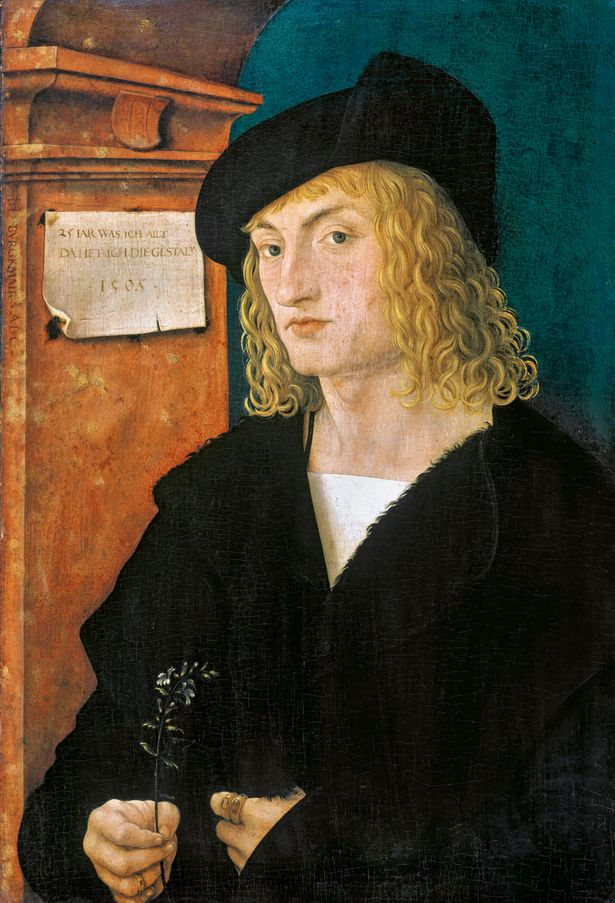
Hans Burgkmair the Elder, Portrait of Barbara Schellenberger, née Ehem, 1507 and 1505
Burgkmair as portrait painter
The portraits of Barbara and Hans Schellenberger are regarded as the first German portraits to feature architectural elements from classical antiquity.
These elements are intended to suggest a humanist education and modernity. The sitter’s desire for self-representation called for the use of the most modern forms and motifs.
The illusionistically creased and crumpled sheets of paper affixed to the columns reveal Burgkmair’s familiarity with Italian models. In Hans Schellenberger’s sensitively idealized features the painter has left us a masterpiece of psychological characterization.

The Fuggers
The Fuggers were one of the wealthiest families in history. In the period around 1500 they were the most powerful bankers and ran Europe’s most successful international trading businesses.
Their name was synonymous with wealth and political influence gained through business success, comparable with the business moguls of our time.
10%
of the economic output of the Holy Roman Empire
In contrast, Bill Gates’s fortune represents ‘only’ 0.6 per cent of the current economic output of the USA


Albrecht Dürer, Portrait of Jakob Fugger, 1518 (?)
Jakob Fugger
Jakob Fugger ‘the Rich’ was one of the most important merchants, mining entrepreneurs and bankers of early modern Europe.
An audit made in 1527 showed that, if still alive, Jacob Fugger’s share of the family fortune would have amounted to around 667,790 gulden. As a comparison: that was about 13,355 times the annual earnings of a much-employed craftsman around that time.
| Born | 1459, Augsburg, Germany |
| Died | 1525, Augsburg, Germany |
| Children | - |
| Partner | Sibylla Artzt |
| Parents | Jakob Fugger the Elder, Barbara Bäsinger |
New attitudes in the Church
Artistic collaboration

The Fugger Chapel, a ‘Gesamtkunstwerk’, is the most magnificent example of the patronage of the arts by the burgher class. With this chapel Albrecht Dürer and Jakob Fugger wrote (art) history. The former was the best-known German artist and the latter the most successful merchant and banker of the time.
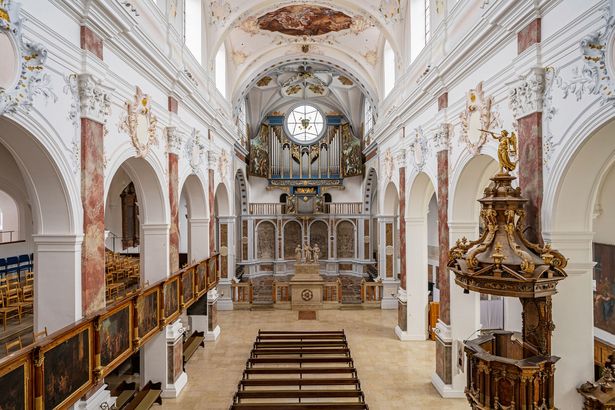
The Fugger Chapel at St Anne’s, Augsburg, present state
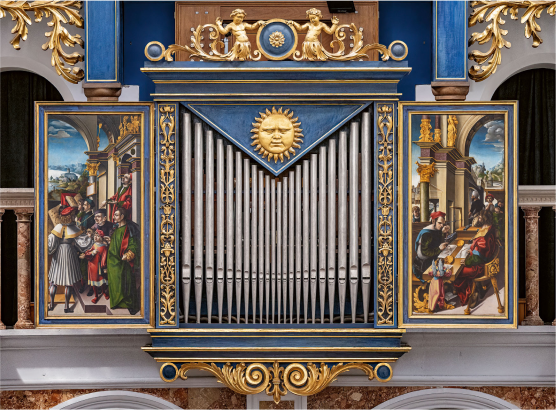
Photomontage of the view of the small organ with the shutters opened in their original arrangement (inner panels), see cats. 3.14, 3.15. Jörg Breu the Elder, Schola Cantorum (left) and Pythagoras at the Forge (right), c.1520
The Fugger Chapel served as funerary chapel and memorial for the family. It was built onto the Carmelite church of St Anne in the centre of Augsburg between 1509 and 1512. The programme of decoration designed by Albrecht Dürer made an important contribution to the fame that Jakob Fugger aimed secure for himself and his family. Through the architecture, furnishings, and decoration of the chapel the Italian vocabulary of forms became established as ‘state of the art’.
The chapel marks the beginning of the Renaissance north of the Alps. Such a dense combination of native Late Gothic traditions and Italian forms of building and decoration was unique in the early sixteenth century. Nothing but the highest quality would do. Alongside Dürer major figures in Augsburg such as Hans Daucher and Jörg Breu the Elder were also involved. The Fuggers’ promotion of artistic creativity that was at the vanguard of the times made them into major patrons of the arts.
Italianate touches in Augsburg
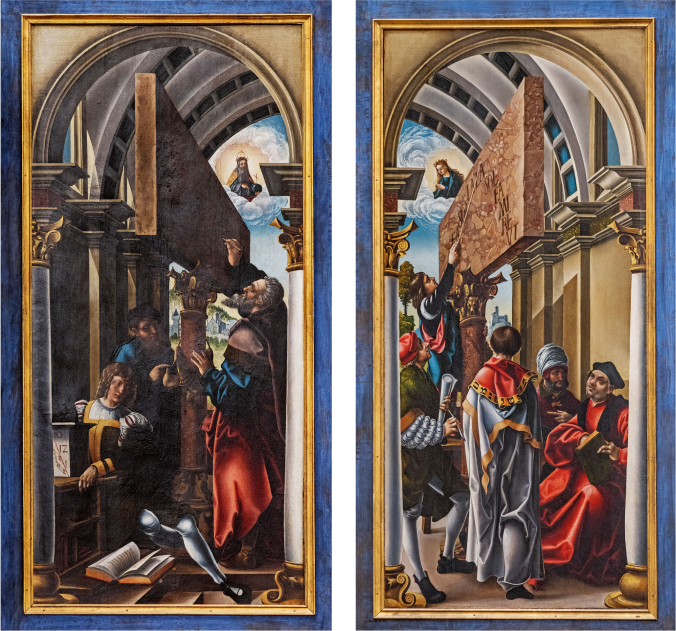
Jörg Breu the Elder, Painted shutters of the small organ, c.1512–1522
In making the shutters for the small chapel organ, Jörg Breu the Elder deliberately drew inspiration from Italian models of which he had first-hand experience.
The shutters feature an unusual pictorial narrative that had no antecedent, namely the history of music. Music was of central importance to the Fuggers as a means of self-representation. God the Father and the Virgin Mary watch over a biblical description of the discovery of music, reflecting the Fugger family motto ‘Gott und Maria’.
Erudite busts
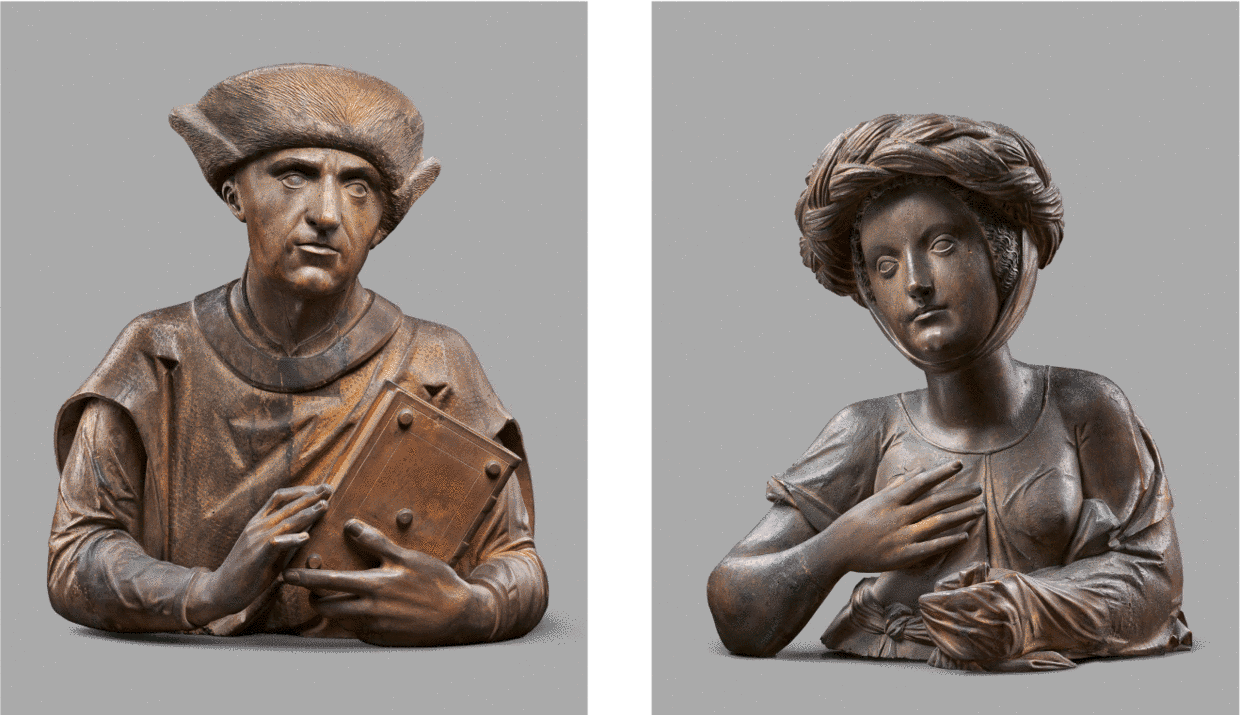
Two busts from the choir stalls in the Fugger Chapel in Augsburg (?), 1509/1517
The wooden busts of a man and a young woman are remnants of an ensemble of busts believed to come from the choir stalls of the Fugger Chapel. They may represent a prophet and a sybil, i.e., Old Testament figures.
Cooperative clergy
New attitudes in the Church
Art was now not intended only to commemorate the patrons or to secure them a place in the afterlife but frequently to demonstrate, during their lifetime, their wealth and prestige. This is clearly shown by the numerous endowments in Augsburg, amongst which the Fugger Chapel is the most splendid example.

Wood sculptures were usually given polychrome decoration. Sculptors cooperated with painters in making such pieces. Holbein worked with the sculptors Michel and Gregor Erhart, who came from Ulm. Holbein may have been responsible for the polychrome decoration of several of their sculptures.
When Holbein returned to Augsburg from Ulm, Michel’s son Gregor, who was a close friend of the painter, followed him. These two artists were neighbours in the city and, as they collaborated so closely, they also influenced each other: Holbein’s Christ as a Man of Sorrows resembles a figure by the sculptor, while for his life-size statue of the Christ Child Gregor borrowed motifs from Holbein.

Gregor Erhart, Christ Child with a Globe, c.1500

Hans Holbein the Elder, Christ as Man of Sorrows, c.1500/05

Hans Holbein d.Ä. (Design), Gregor Erhart (Model), Kaisheim Reliquary of St Sebastian, 1497
The statuette of St Sebastian is part of a reliquary. We do not know the name of the Augsburg goldsmith who made the silver statue, but Gregor Erhart made the sculpture that served as a model, for which Hans Holbein the Elder made the design drawing.
From Augsburg to Europe
Hans Holbein the Elder had two sons. The younger one, Hans Holbein the Younger, went on to make a dazzlingly successful career. Together with his brother Ambrosius, Hans moved to Basel, another important centre of humanism, and later to London, where he became court painter to Henry VIII.